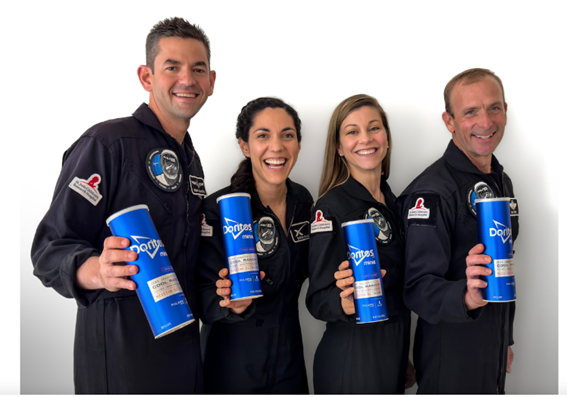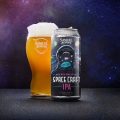Doritos has launched a new product called Cool Ranch that offers a unique experience in space. A new formula has been created to prevent the spicy flavor from being affected in zero gravity or microgravity conditions.
Thanks to this measure, astronauts will be able to indulge in their favorite snack without having to worry about the presence of condiment particles on the space station.
The latest product novelty is available in a small version to be enjoyed in one bite. In addition, its special packaging has the particularity of glowing in the dark. This configuration offers an eating experience literally “out of this planet,” the brand assures.
Doritos has teamed up with St. Jude Children’s Research Hospital and St. Jude Children’s Research Hospital. Doritos has teamed up with St. Jude Children’s Research Hospital and the Polaris Dawn mission to make it a charity event, inviting fans to help, in addition to donating $500,000 to the health center.
The Doritos brand launched a limited edition of Cool Ranch Zero Gravity, in which they will donate $500,000 to St. Jude to support their goal of finding cures and saving lives. They will donate $500,000 to St. Jude to support their goal of finding cures and saving lives.
By virtue of this collaboration between Doritos and Polaris Dawn, significant change is being driven by supporting St. Jude in its mission to improve survival rates for more than 400,000 children with cancer worldwide each year. The partnership between Doritos and Polaris Dawn is driving significant change by supporting St. Jude in its mission to improve survival rates for more than 400,000 children with cancer worldwide each year. Both organizations are working together as drivers of progress in the fight against this disease.
Polaris Dawn is a planned private human space mission operated by SpaceX and is the first of 3 planned missions in the program.
During the mission, the 14th orbital flight of a Crew Dragon spacecraft carrying Isaac Man and his crew hope to reach as far as 1,400 kilometers (870 miles) from Earth, the farthest anyone has been since NASA’s Apollo program. The goal is to pass close to the Van Allen radiation belt to study the effects of space radiation and spaceflight on the health of the human body.







